Exercise promotes great health — if you listen to your body. Overtraining and recovery are key terms for fitness fans. Get to grips with the 10 symptoms of overtraining, and find recovery tips to help you get back on track. Overtraining comes from excess exercise. Are you at risk? This is Part 2 in a series about overtraining where The GOODista explores why too much exercise is just as bad for your health as too little.
Overtraining and Recovery: Exercise in Excess
Overtraining leads to a number of health issues from injury to depression. Overtraining is a real issue for many fitness enthusiasts as the adrenaline rush, and changes to body / lifestyle encourages you to push more. Challenges can turn into unhealthy conquests, which in turn becomes health problems. If you are a fitness newbie it can be easy to overtrain. You won’t realise what is happening unless you know how to read the signs.
If you constantly work out to a max you are exposing yourself to chronic overwork where too high intensity, or volume, beats down on the body. You can throw your body into a catabolic state which leads to the absolute reverse of what exercise is meant to be.
Part 1 – Overtraining – Is Exercise Bad for Your Health covered overtraining and catabolism in detail, and how it can destroy a hard-fought for fitness level.
The basic solution is to respect the body’s need for rest, recovery and muscle regeneration. If you are unsure if you are at risk scroll on down to the 10 signs of overtraining, and get the tips on how recover, and prevent.
Have you ever felt that you have done too much, or felt depleted by your exercise routine? Check out the 10 symptoms of overtraining and let us know.
Tip: If you like articles about fitness, health, lifestyle changes – get inspired every week:
10 Symptoms of Overtraining
We are all unique, and as individuals we set goals and learn how our bodies respond to training. I am sure you have a properly designed training plan that includes rest between sets, and recovery days. Taking time out further to read what your body tells you can be another way to increase your fitness, or help newbie workout friends.
Have you felt as if you are dropping in performance? Is the output less than the input? Are your workouts not getting you the same results are before — or does it suddenly feel impossible to finish an exercise routine? Check out if the symptoms below apply to you – and find your prevention and recovery tips in the next section.
- Progress: Has your body stopped changing? Muscles need a chance to repair which takes place when your body is given the proper time to rest and recover. A
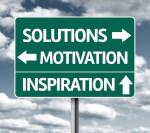 nutritious, healthy diet is also needed for a healthy balance,
nutritious, healthy diet is also needed for a healthy balance, - Motivation Dip: Does a workout suddenly put you off? You have overdone it and your body / mind tell you to take it easy. Workouts should add to your quality of life, so read below how to get the fun back.
- Thirst: You seem not to be able to quench your thirst especially when you’re working out. Thirst is the first sign of dehydration which in turn is a sign that your body is on its way to a catabolic state.
- Injuries: Are you getting injuries or exasperating an old one? This is a sure sign of overtraining as your body doesn’t get enough time to recuperate between workouts. You will be in weaker state, and thus more prone to get injured again
- Sickness: A healthy lifestyle shouldn’t make you fall ill. However, your might be overtraining and as a result your body and the immune system is telling you to take is easier. Your body may be in a catabolic state, which lowers immunity and increases illness.
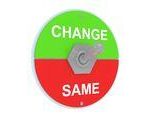
- Altered Resting Heart Rate: Altered resting heart rate is the effect of an increased metabolic rate that strives to meet the imposed demands of the training. If it is higher than what you know to be normal, it is a sign that the body hasn’t yet recovered. Measure resting heart rate before you get up for 1 week, and look at solutions for rest/recovery below.
- Muscle Soreness: A good workout will give you sore muscles for 1 -2 days but, if you’re still sore past the 72-hour mark this is a sign of overtraining.
- Lowered Self-Esteem: If you train to a max your ability to meet fitness goals diminish as you overtax the central nervous system. You will feel low, and less accomplished which in turn impact on other parts if your work/life.
- Insomnia: Exercise promotes good sleep, but if you’re having difficulty sleeping you may be exercising to excess. Overtraining can result in a combination of nervous
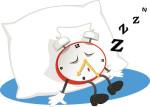 system and / or hormonal system overload, which provokes insomnia.
system and / or hormonal system overload, which provokes insomnia. - Mood Changes: Overtraining can take the expression of obsessive behaviour, personality changes, loss of concentration and depression. The release of excess cortisol in the body creates an unhealthy hormone imbalance. Mood changes come when the intensification of training leads to fixation on body image / weight or viewing of exercise as a conquest rather than a healthy challenge. Overtraining leads to decrease in performance, which then promotes feelings of inadequacy, irritability and aggression. The longer this goes on for the more likely you are to get depressed.
Overtraining and Recovery Tips
If any of the symptoms of overtraining above apply to you the best recipe for real recovery is:
- Take a week off training, eat clean food, and set up a new training schedule where rest / recovery is respected keeping the exercise time to 45 – 75 minutes max.

- Go to bed earlier, as the hours between 10 pm and 2 am are essential restoration hours for the body. Sleeping for 6-9 hours is key for recovery. It makes you go further and faster, especially if you go to bed and wake up at the same time.
- Avoid protein bars, processed foods, man-made dietary supplements and concentrate on a diet of clean food consisting of vegetables, fruits and grains and light on meat. If you are craving certain foods this may be a sign of vitamin and mineral deficiency – which you can heal naturally through a healthy diet.
- Drink water (at least 8 glasses per day).
- Do not train the same muscle groups on consecutive days, which includes distance running or cycling. A varied training programme will benefit you. Read: Guidelines from the American College of Sports Medicine.
- If you have an injury change your fitness plan to low intensity (Pilates, Yoga, Tai Chi etc) void of weights or cardio.
This active recovery will promote fitness and real healing. Slowly build back up by introducing forced rest periods, and changed training intensity. Respect your body and it will pay you back.
- Working out is one part of your life. You probably have stress at work/life, social commitments and need to sleep, eat and enjoy. Finding a balance will improve self-esteem, fitness and life as a whole.
Overtraining and Recovery: Healthy Balance
A healthy balance is key to a good health. A good fitness regime will respect the need for the human body system to rest and recover. This also means feeding it clean, healthy food. This will result in a healthy lifestyle without the fatigue of overworking.
A great book for performance seekers is Go Faster Food by marathon runner Kate Percy. You get over 100 energy boosting recipes and the introductory chapters are filled with information of why the body needs certain foods to make you go further, faster.
Recovery time is as important as the actual workout. Athletes know this, but recreational fitness fans can have a hard time to find a healthy balance. Read this article: 7 Essential Elements of Rest and Recovery – breakingmuscle.com
Strength training and intense aerobic activity leads to microscopic tearing in the muscle fibres, and the muscles cannot heal and grow without proper rest. Research shows that excess cortisol levels are released in the body after an hour of exercise, which is why limiting your workout sessions are advisable. Read this article: 14 Keys to Recovery – noblefit.weebly.com
The most beneficial exercise plans combine aerobic exercise with anaerobic training. Weight training builds up the muscle, allowing the body to form more muscle mass and thus effectively burn more calories throughout the day. High-intensity cardiovascular or aerobic exercise burns fat while strengthening the heart. Bear Grylls describes how he changed his training to include variation, more intense but shorter sessions and how he increased his fitness overall by doing so. Your Life – Train For It is a great inspiration for anyone who wants to reframe their workouts.
Depending on your individual exercise goals varying between intensity, types of training and volume will give results. This can be adjusted into weekly varied workout routine where you need 1 – 2 days full rest (no exercise at all!)
Healthy, balanced food is of course an integral part to a healthy lifestyle. If you have food cravings, you may also be suffering from vitamin / mineral deficiency.
The way forward is to understand your body’s signals, and avoid overtraining through a healthy balance.
Overtraining and Recovery: No Pain No Gain?
When you have worked hard to get into a greater level of fitness, the last thing you want is to lose it. Many get fooled by statements such as ‘No Paid No Gain’. The way to go forward is literally to push back by finding a varied fitness programme that respects the body’s need for rest and recovery. Why not get into Yoga? It’s a great way to increase flexibility, and build core strength.
A good training plan will include walks, active recovery, high and low intensity workouts and moderation in volume. Combine this with non-processed, healthy foods, mindful care to stress less, and a healthy communication with friends and family.
What you get in return is a healthy lifestyle which makes you Feel Good, Be Good and able to Do Good.
Thanks for reading and sharing this post 🙂 If you like articles about lifestyle changes to increase wellness and energy every day and working (far) away — feel free to subscribe (for free, of course!).
Recommended and Related:
- Working Out for 45 minutes Then Stop It – exercise.com
- 12 Signs You’re Overtraining – mensfitess.com
- Catabolism and Anabolism – medicalnewstoday.com
- What Does Active Recovery Really Mean? – breakingmuscle.com
- Exercise Addiction – breakingmuscle.com
- Running: The Line Between Hard and Over Training – runnersconnect.net
- 5 Rules of Building Strength – bodybuilding.com
Too Much Exercised or Too Little? Comment – Please:




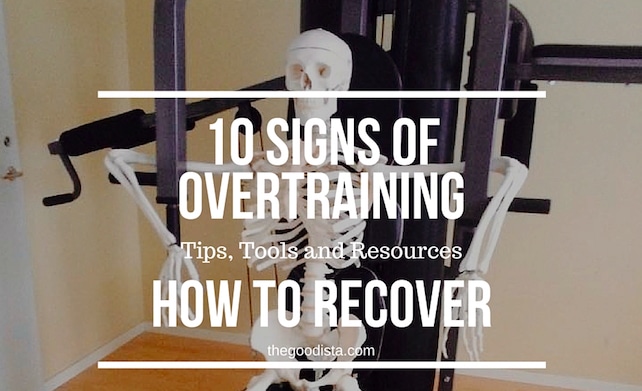
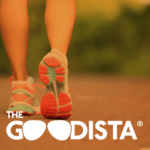
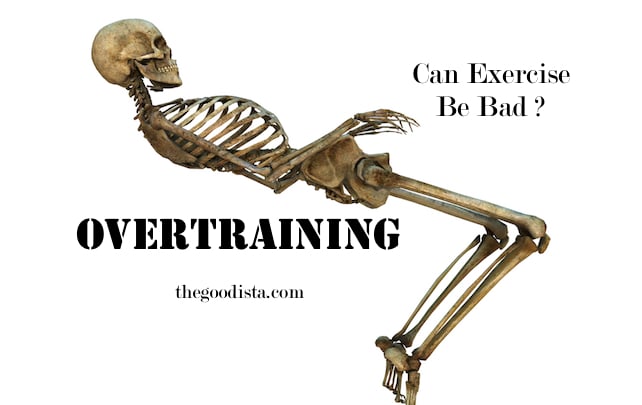
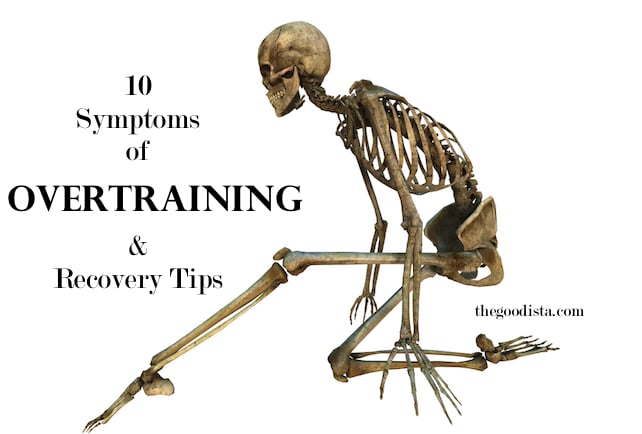








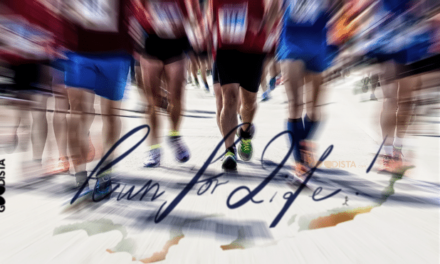


A healthy balance, yes indeed! I really like your series on training, healthy food and healthy lifestyle. You truly share your insight and wisdom. I recommend your website to all my friends 🙂
Thanks for your encouraging comment, and for recommending The GOODista to your friends. The more the merrier – and healthier 🙂